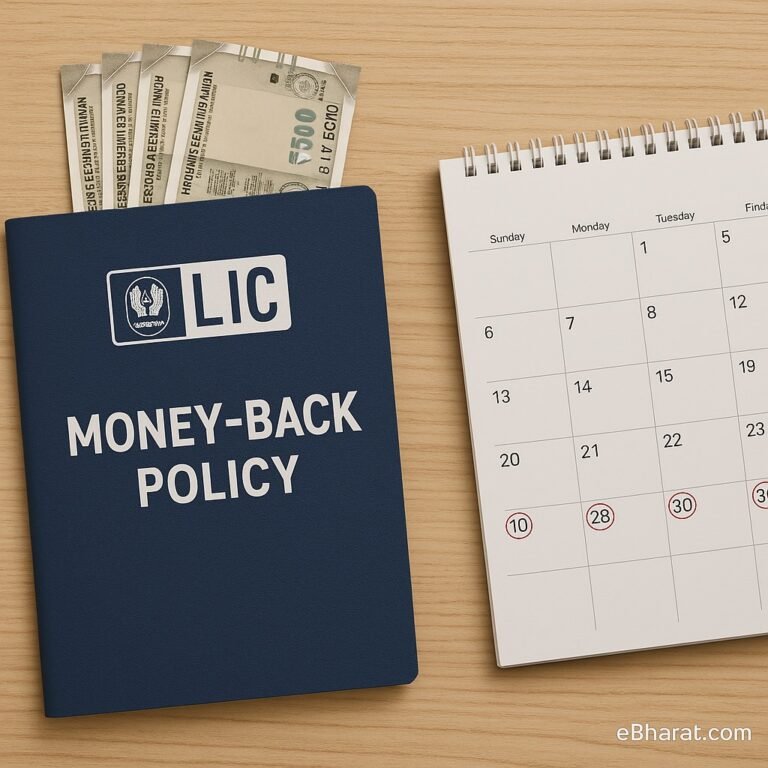
You’ve probably heard insurance agents say:
“Sir, you’ll get a bonus every year with this policy — it’s a participating plan!”
Sounds like a win-win, right? You get life insurance plus annual profits?
Well… not exactly.
While participating (or “with-profits”) life insurance plans are popular in India, very few buyers understand how they actually work, and what those “bonuses” truly mean.
Let’s break it down in simple terms — so you can decide if it’s right for you.
What Does “Participating” Really Mean?
A participating plan means you’re not just buying insurance — you’re also sharing in the company’s profits.
Every year, the insurance company makes money from premiums, investments (like bonds or government securities), and operational efficiency. If they do well, they may declare bonuses, which are added to your policy benefits.
But — these bonuses are not guaranteed.
They change every year, and depend entirely on the insurer’s performance.
Types of Bonuses in Participating Plans
Here are the most common bonus types:
- Reversionary Bonus: Declared annually and added to your sum assured. Paid only at maturity or on death.
- Terminal Bonus: One-time bonus paid at the end of the policy, usually after long-term holding (15–20 years).
- Cash Bonus: Paid out every year instead of accumulating.
Example:
You buy a participating policy with ₹10 lakh sum assured. If the bonus rate is ₹40 per ₹1,000, you get ₹40,000 bonus for that year.
But next year, the rate might rise to ₹45 — or drop to ₹30 — or even zero.
There’s no fixed guarantee unless the policy explicitly states it.
Sample Bonus Projection (LIC Jeevan Labh – Age 35, SA ₹10L)
| Policy Year | Declared Bonus (₹/1,000) | Yearly Bonus (₹) | Total Bonus Accumulated |
|---|---|---|---|
| Year 1 | ₹40 | ₹40,000 | ₹40,000 |
| Year 2 | ₹42 | ₹42,000 | ₹82,000 |
| Year 3 | ₹38 | ₹38,000 | ₹1,20,000 |
📌 Note: These are just sample rates. LIC, Max Life, SBI Life, etc. declare actual bonuses every year based on their business results.
Which Popular Plans Are Participating?
- LIC Jeevan Labh – One of LIC’s flagship endowment plans
- SBI Life Smart Bachat – Comes in a “with-profits” variant
- Max Life Whole Life Participating – Offers both reversionary and terminal bonuses
- Bajaj Allianz and Kotak Life – Also have multiple par policies
Just remember: participating ≠ guaranteed returns.
What Most People Don’t Realize
- Bonuses can vary or even be zero some years
- Surrendering early (before maturity) often means you lose the bonuses
- Internal Rate of Return (IRR) is typically around 5.5% to 6.5%, sometimes less
- These are not ULIPs — they’re not market-linked, just profit-linked
- Many policies don’t clearly mention if bonuses are reversionary or terminal — read the fine print
Who Should Consider Participating Plans?
- Traditional savers who want some life cover + some growth
- Buyers uncomfortable with stock markets or complex products
- Those looking for disciplined, long-term savings (15–25 years)
- People using the policy for estate planning or tax saving with low risk appetite
Who Should Avoid?
- Those expecting high returns (mutual funds may be better)
- People who might need to surrender early
- Investors who want full transparency or flexibility in premiums/payouts
- Young earners who can tolerate short-term market ups and downs
Final Word
Participating plans are often marketed as a safe blend of insurance and savings — and they are, to an extent. But the key word is “participating”, not “promising.”
You’re sharing in the insurer’s profits, not locking in returns.
If you’re okay with moderate returns, long lock-ins, and bonus variability, these plans can serve as a stable pillar in your conservative financial plan.
Just don’t treat them as an FD replacement — or expect magic.












